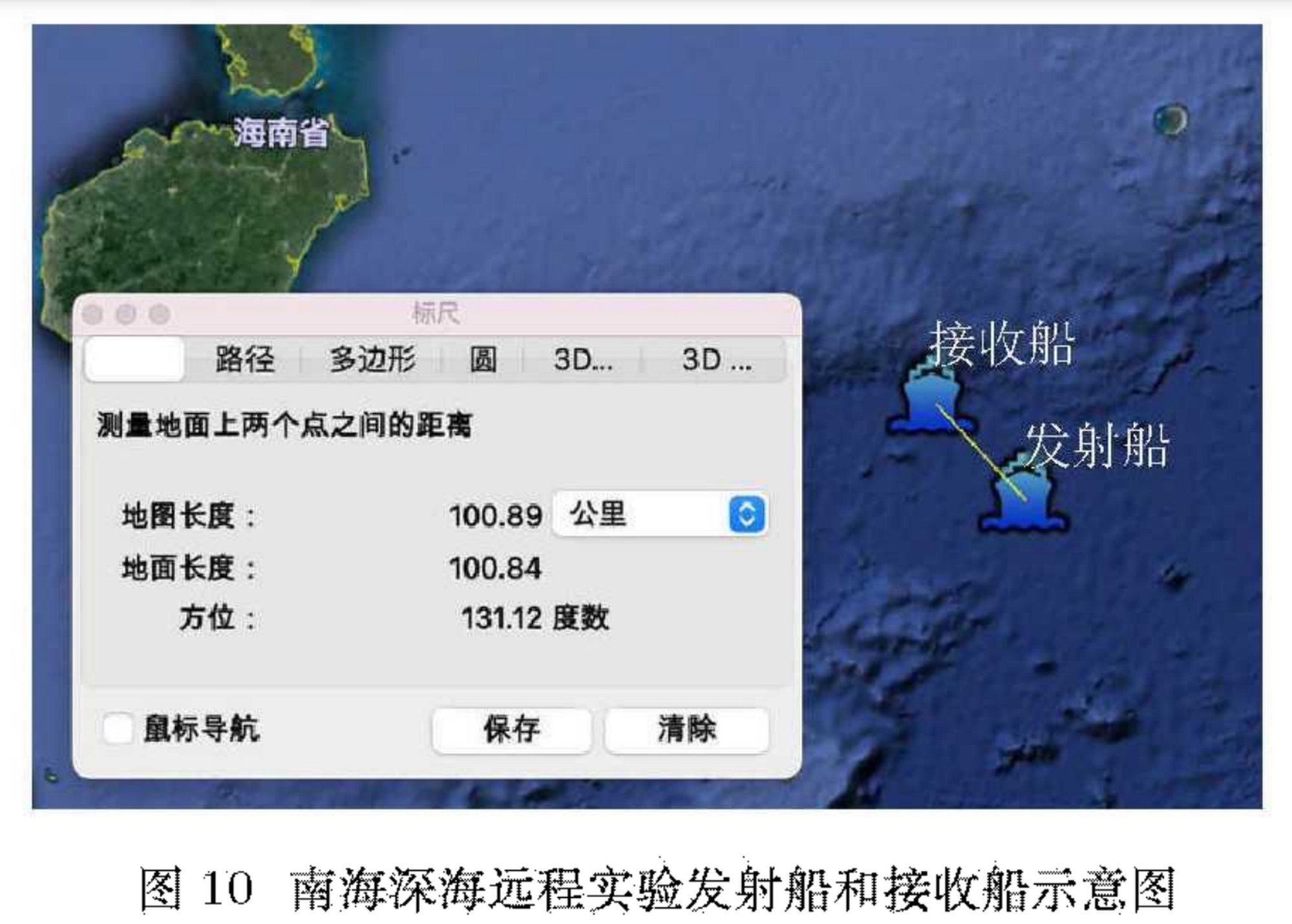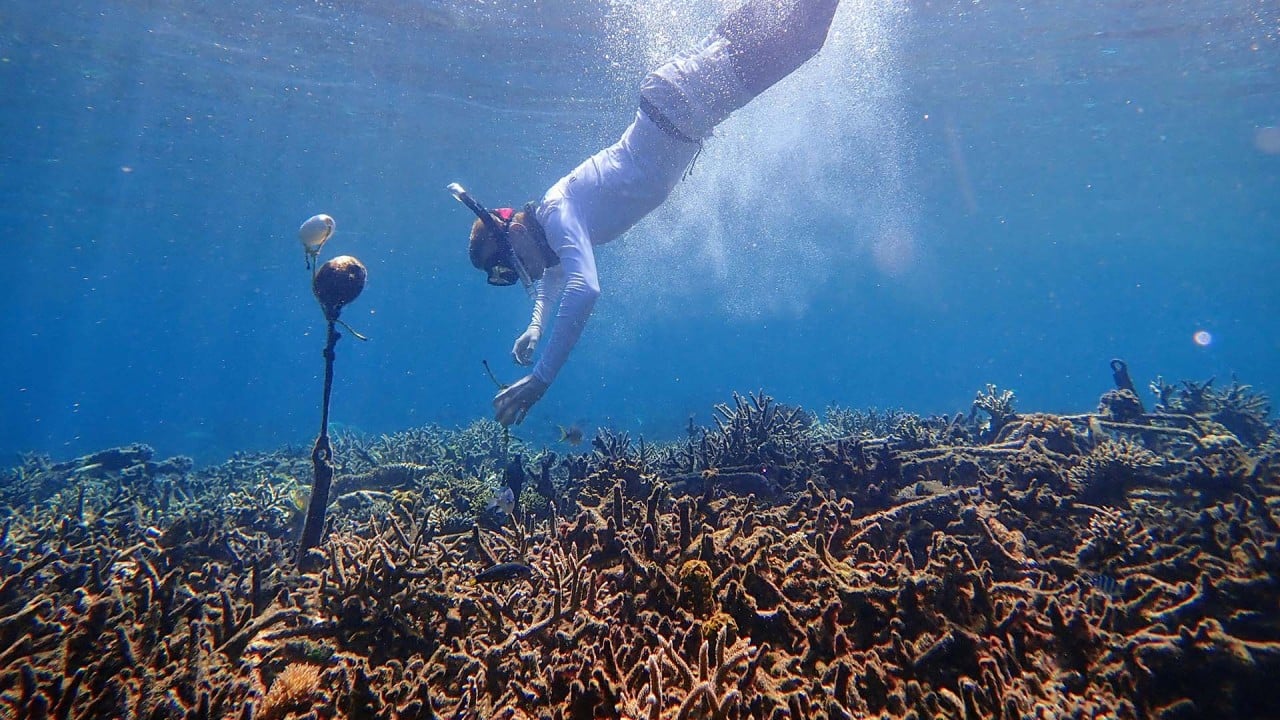
Chinese scientists develop long-distance underwater communication in South China Sea
- Researchers say innovation would allow submarines and drones to maintain contact over more than 30,000 sq km (11,600 square miles) and aid communication with smart weapons
- Team is developing a new technology to convert sound signals into whalesong to camouflage military channels
A listening device picked up sound signals from 105km (65 miles) away at a depth of 200 metres (656 feet) during a field test in an important passageway for submarines, according to the study by the team at northwestern China.
The data transmission rate reached nearly 200 bits per second (bps), on par with the bandwidth of very low-frequency radio sent by a naval command to nuclear submarines using the world’s largest land-based antennas.
Despite heavy noises in the background, the encrypted messages contained no mistakes, the researchers said.
Using commercially available technology, acoustic communication of this speed and quality is usually restricted to a distance of less than 10km.
In an experiment conducted by South Korean researchers last year using British hydrophones, for instance, a transmission rate of 128bps was recorded over a distance of 20km.
Low-frequency sound – such as calls made by whales – can travel for hundreds, or even thousands, of kilometres in the ocean, but identifying these signals and decoding meaningful information from them is difficult.
The sound waves can spread in different directions and speeds as they travel through currents or hit a sea mountain. The longer the distance, the worse the distortion and weakening of the signal when it reaches a receiver.

The results of the South China Sea experiment proved the “effectiveness and good performance” of the new technology in increasing underwater communication range and efficiency, said project lead scientist professor Liu Songzuo, of Harbin Engineering University, one of the Chinese universities sanctioned by the US government, in a paper published in the domestic peer-reviewed journal Acta Acustica on September 6.
China has deployed unmanned surface and underwater vessels in the region to patrol and collect information, according to openly available information.
A deep sea base for the docking and recharging of robotic drones will be up and running over the next few years in the South China Sea, according to the Chinese government’s plan.
Chinese researchers are also developing smart weapons that can be planted on sea beds and activated during a war, and drones powered by disposable nuclear reactors that can travel long distances in a swarm formation.
Destroyer photos offer clues about Chinese navy’s growing fleet
These AI-driven machines must stay in constant contact with one another to share intelligence, plan routes or coordinate an attack, according to researchers involved in the programmes.
Numerous technologies with “low requirements on receiving signal-to-noise ratio have been widely used in deep-sea long-distance communication and have achieved good results”, said Liu in the paper.
“However, the efficiency of these technologies is low, and the available frequency band for long-distance underwater acoustic communication is limited, resulting in a low achievable communication rate.”
Liu said they conducted the test on a windy day, with waves rocking the research ship while a strong sea current pulled the hydrophone array away from the best listening position. Under the water lay rough terrain with cliffs and gorges that could absorb, deflect and distort the sound waves.
In such a challenging environment, more than 70 per cent of the sensors were unable to pick up anything, according to the Chinese researchers.
The strength of signals picked up by the few sensors was only a few decibels, or quieter than a breath. And these signals were mostly drowned out against strong background noise caused by natural and human-man activities in the ocean, they said.
Liu’s team said it had developed a new communication protocol to overcome these challenges.
The technology, inspired by mobile phone communications, could package the signal into many separate but related segments and beam them out as sound waves in all directions.
The receiver could pick up some of these waves coming from different directions and at different times.
An algorithm helped the receiver identify each of these waves and reconstruct the full message using random bits of the collected information.
The mathematical model used in this study was developed and evaluated with real-life data collected from the South China Sea to improve its performance in the region.
Chinese scientists develop flying unmanned submarine
In a conference presentation earlier this year, Liu’s team said they were developing a new technology to convert the sound signals into whalesong to camouflage military channels.
Sending large amounts of data – such as photos and video – remains a challenge for sound-based communication. Researchers around the world are in a race to develop laser communication devices for high-speed transmission over a distance of less than 100 metres.
China holds a record after an underwater experiment conducted by Fudan University researchers in Shanghai reached 1 gigabit per second over 63 metres (206 feet) in 2017.



